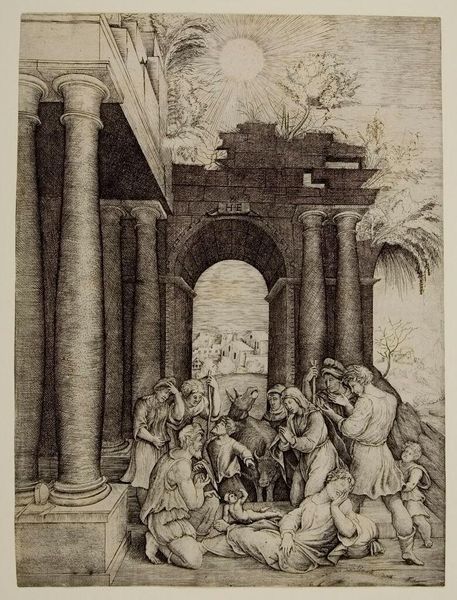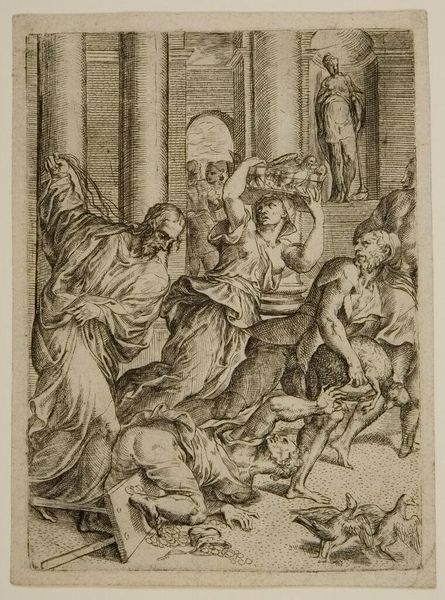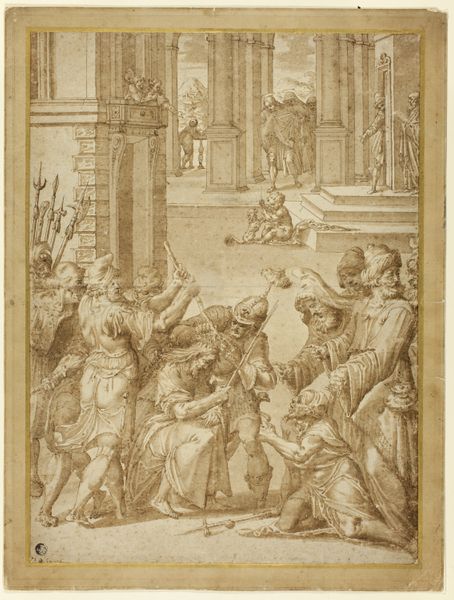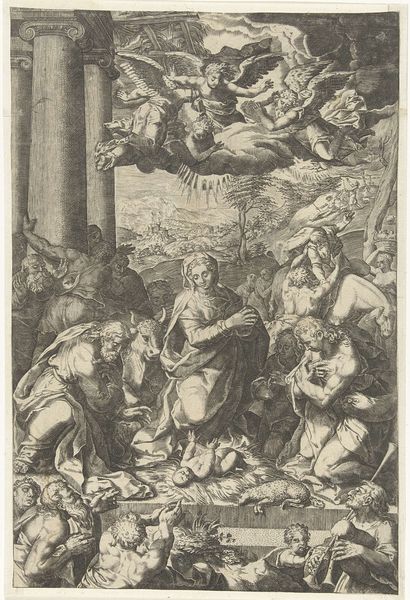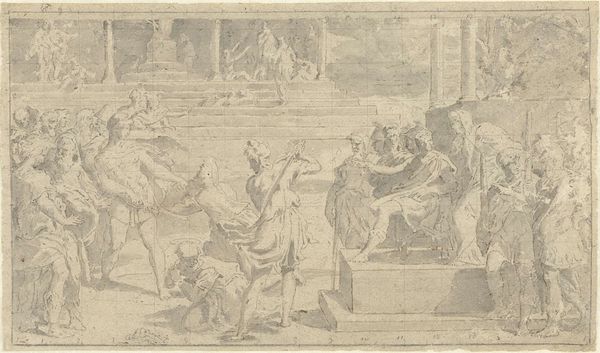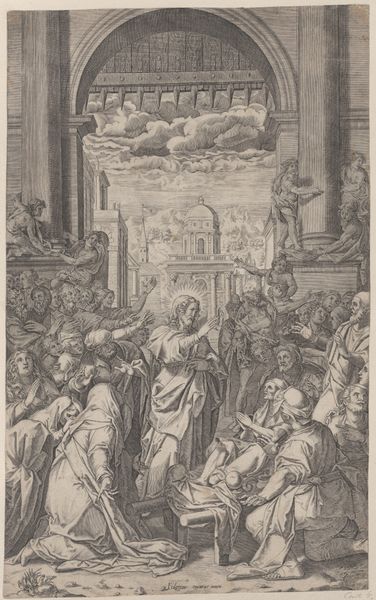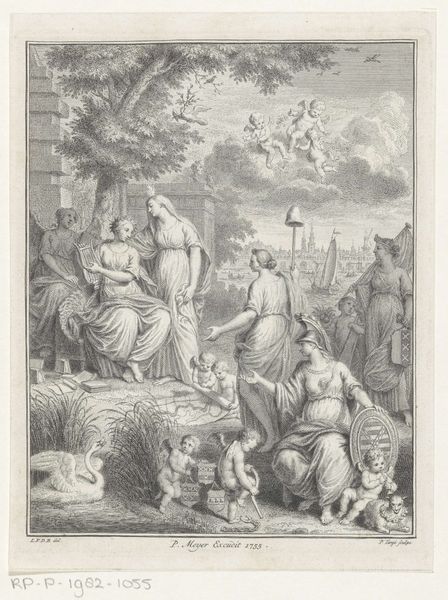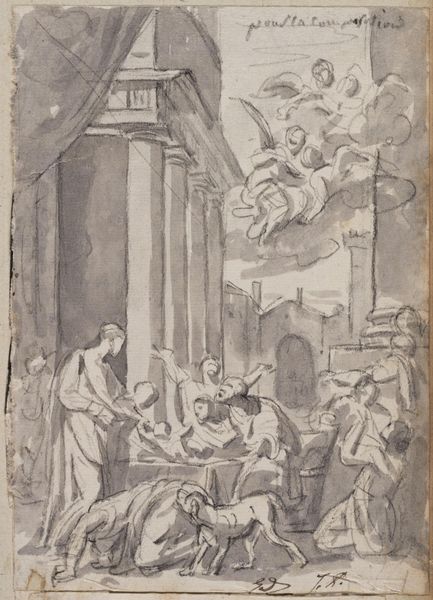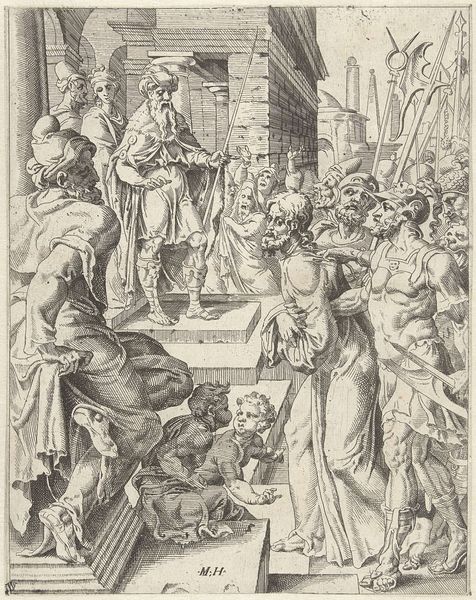
print, engraving
# print
#
figuration
#
line
#
history-painting
#
italian-renaissance
#
engraving
Copyright: Public domain
Editor: So, here we have Domenico Beccafumi’s print, "The Adoration of the Shepherds." It’s an engraving from the Italian Renaissance, seemingly defined by a lot of precise lines. What strikes me is how Beccafumi uses the lines to create a sense of depth, almost theatrical. What's your take? Curator: This print brings up interesting questions about labor, doesn’t it? Consider the skill required to produce an engraving like this – the sheer manual dexterity, the hours spent meticulously carving those lines into the metal. The finished print, then, becomes a commodity, circulated and consumed. Does the focus on its production change how you view the image itself, and the traditional reading of its subject? Editor: Definitely! I hadn't considered the labor aspect so intensely. Knowing that it's an engraving immediately changes how I perceive each mark; now it makes me consider each individual mark that went into creating the whole composition! But do you think that by focusing so much on labor we lose the historical context - its meaning within the culture it was made in? Curator: Not necessarily lose it, but perhaps reframe it. Look at how Beccafumi renders classical architecture alongside the pastoral scene. The columns, the archway – these all speak to a lineage, a learned tradition. By placing the adoration within this framework, is he elevating a humble subject? And further, by reproducing it via a printed medium, making it accessible to a wider audience? What happens when religious scenes are brought to the masses through cheaper means of production and purchase? Editor: I see your point. The medium itself becomes part of the message. That really broadens the possibilities for interpretation. Thanks! Curator: Indeed. Considering the materials and production helps us understand how art operates within a specific social and economic context. It adds layers to our understanding.
Comments
No comments
Be the first to comment and join the conversation on the ultimate creative platform.
